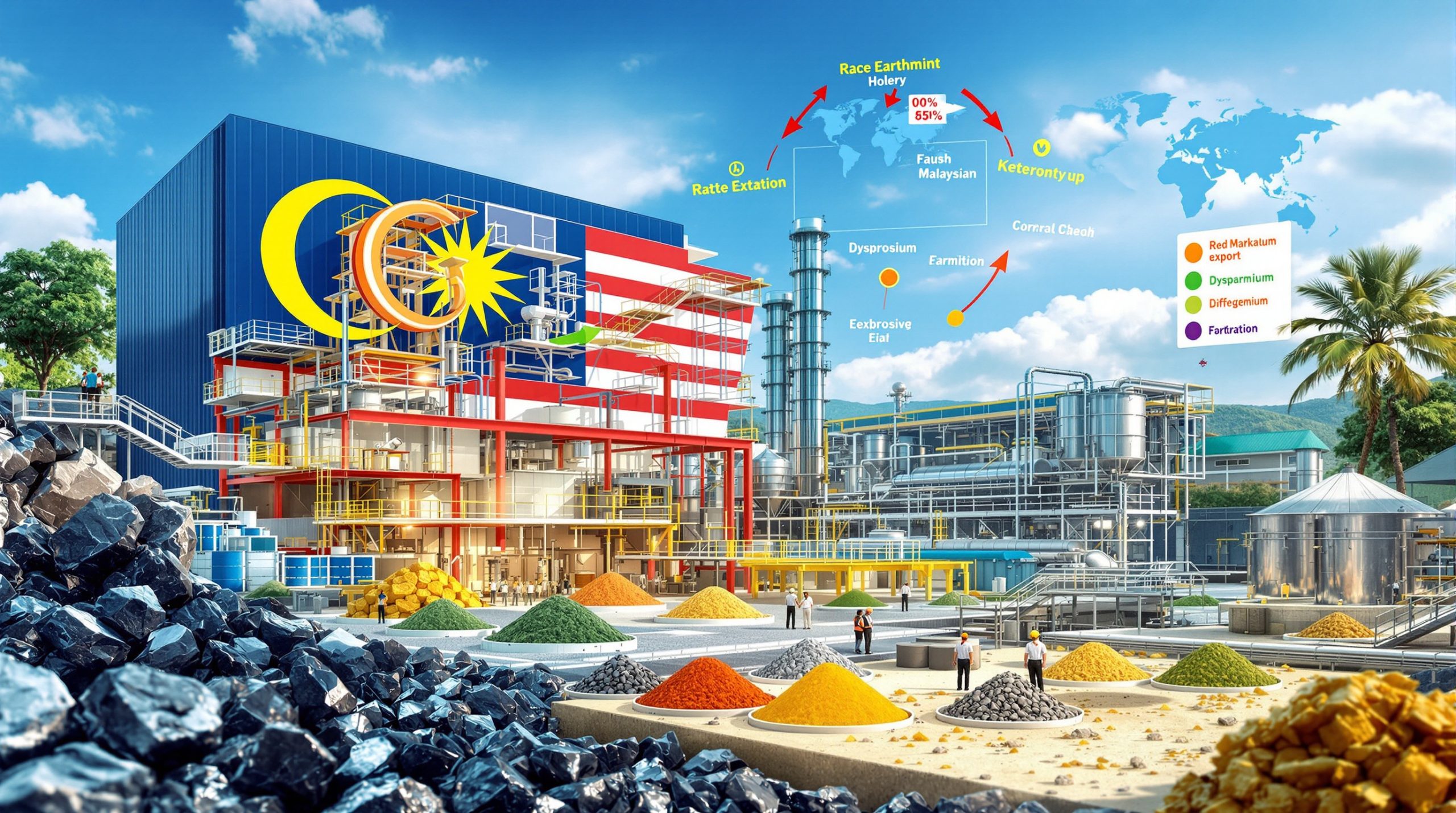The Coking Coal and Coke Market Landscape: Trends and Outlook for 2025
The intricate dynamics of the coking coal and coke industry continue to evolve in 2025, with distinctive regional variations, processing methodologies, and market sentiments shaping the trajectory of these critical steel-making raw materials. Industry stakeholders face a complex web of supply-demand fundamentals that demand careful analysis to navigate profitably. Ongoing industry evolution trends suggest that technological advancements will continue to impact production methods and market dynamics.
Current State of the Coking Coal Market
The coking coal and coke market analysis in 2025 exhibits notable regional price disparities that reflect both logistical constraints and quality differentials. Recent data from Shanghai Metal Market (SMM) reveals a developing buyer's market as supply conditions have gradually loosened relative to demand.
Regional Price Variations and Quality Premiums
Low-sulfur coking coal currently commands 1,270 yuan/mt in the Linfen region, while similar grades in Tangshan are priced significantly higher at 1,370 yuan/mt. This 100 yuan/mt differential highlights the critical role that geography and logistics play in the coking coal value chain.
The price gap primarily stems from:
- Transportation infrastructure disparities between northern and central coal-producing regions
- Quality variations in sulfur content, ash levels, and coking properties
- Proximity to major steel production hubs, particularly in China's northeastern corridor
- Local environmental compliance requirements affecting usability and value
"Regional price disparities often reflect the complex interplay between coal quality parameters and transportation costs rather than simple supply-demand dynamics," notes SMM's market analyst team in their May 2025 sector outlook.
Supply-Side Fundamentals
Coal mining operations have maintained stable production levels throughout early 2025, creating supply conditions that industry analysts characterize as relatively loose compared to current demand patterns. This supply adequacy has begun exerting downward pressure on prices across most coal grades.
Key supply indicators include:
- Consistent mine operational rates despite seasonal challenges
- Growing sales pressure forcing some producers to adjust quoted prices downward
- Failed auction events signaling buyer resistance to current price levels
- Inventory accumulation for specific coal varieties, particularly medium-sulfur grades
- Extended delivery scheduling at major distribution hubs suggesting logistics flexibility
These factors collectively point toward a market environment that increasingly favors buyers, with expectations of continued price softening in the near term. Recent commodity trading strategies have adapted to capitalize on these shifting dynamics.
Performance of the Coke Market in 2025
The coke segment demonstrates distinctive pricing structures based on both quality gradations and processing methodologies. The market reveals significant price premiums for advanced processing techniques that enhance coke quality parameters.
Current Pricing Structure by Grade and Processing Method
Coke prices exhibit significant stratification based on both quality classification and quenching methodology:
| Grade & Process | National Average (yuan/mt) |
|---|---|
| Premium metallurgical coke (dry quenching) | 1,680 |
| Quasi-premium metallurgical coke (dry quenching) | 1,540 |
| Premium metallurgical coke (wet quenching) | 1,340 |
| Quasi-premium metallurgical coke (wet quenching) | 1,250 |
The pricing data reveals two critical premium structures:
- Quality premium: Premium metallurgical coke commands approximately 90-140 yuan/mt over quasi-premium grades
- Processing premium: Dry quenching technology creates a substantial 340-430 yuan/mt advantage over wet quenching methods
This processing premium reflects dry quenching's superior technical attributes:
- Enhanced coke strength after reaction (CSR values)
- Reduced moisture content improving blast furnace efficiency
- Lower volatile matter percentages
- Better uniformity in physical properties
- Reduced environmental impact and emissions
Supply-Demand Balance Analysis
Coking enterprises have maintained high operational rates throughout early 2025, ensuring consistent supply to downstream steel producers. However, a nuanced analysis reveals emerging imbalances that may reshape market dynamics.
Current market indicators include:
- Robust production volumes at major coking facilities
- Shipment slowdowns reported at select distribution points
- Low overall inventory levels at coking plants, minimizing immediate sales pressure
- Growing imbalance between production capacity and market absorption rates
- Seasonal factors beginning to influence demand patterns
These conditions have created what industry analysts describe as a "precarious equilibrium" where high production levels are meeting increasingly selective buying behavior. Furthermore, emerging global mining trends continue to influence regional supply dynamics.
Factors Influencing Buyer Behavior
Steel mill procurement strategies and seasonal considerations are playing increasingly significant roles in shaping market sentiment and transaction volumes within the coking coal and coke ecosystem.
Steel Mill Procurement Patterns
Steel producers continue operating at relatively high capacity utilization rates, ensuring baseline demand for both coking coal and coke as essential production inputs. However, their procurement behavior has grown increasingly strategic in anticipation of potential price reductions.
Current procurement dynamics include:
- Ongoing production needs maintaining baseline demand
- Medium-to-high inventory levels reducing immediate restocking urgency
- Limited price acceptance at current levels, with resistance to upward movements
- Strategic purchasing delays in anticipation of potential price decreases
- Increased quality scrutiny to maximize value of necessary purchases
"Steel mills have adopted a distinctly cautious stance toward raw material procurement despite maintaining high operational rates," notes SMM's industry analyst. "This reflects growing market leverage favoring buyers as seasonal factors take hold."
Seasonal Considerations and Market Psychology
The approaching traditional consumption off-season for steel products has begun influencing market psychology throughout the supply chain. This seasonal pattern typically manifests in:
- Reduced construction activity during summer months in key markets
- Transportation challenges during certain weather conditions
- Inventory management adjustments ahead of seasonal demand shifts
- Pricing strategy recalibrations by both producers and consumers
The collective impact of these seasonal patterns has strengthened buyer leverage in price negotiations, with a growing sentiment favoring raw material price reductions. This has contributed to the increasing prevalence of a wait-and-see approach among market participants.
Short-Term Market Projections
Industry analysts anticipate continued evolution of market conditions over the coming months, with distinct trajectories for both coking coal and coke markets based on current fundamentals and seasonal patterns.
Coking Coal Price Outlook
The coking coal market appears positioned for continued downward pressure, particularly for varieties currently experiencing inventory accumulation. Regional price disparities are expected to persist, reflecting ongoing quality and logistics differentials.
Key factors shaping the short-term outlook include:
- Continued price pressure for high-inventory coal varieties
- Regional price disparities likely to persist based on quality and logistics
- Auction performance serving as a critical indicator for market direction
- Potential supply-side adjustments if price deterioration accelerates
- Price stabilization possibilities dependent on steel production rates
Market participants should closely monitor auction clearance rates as a leading indicator of price trajectory, with failed auctions signaling potential for accelerated price decreases. In addition, understanding investment opportunities outlook can provide valuable context for market positioning.
Coke Market Trajectory
The coke segment shows signs of a short-term weakening trend based on fundamental factors and seasonal patterns. However, limited inventory buffers at production facilities create potential for market volatility if demand patterns shift unexpectedly.
Outlook indicators include:
- Short-term price softening based on fundamental factors
- Buyer's market conditions strengthening as seasonal factors take effect
- Negotiation leverage shifting toward steel producers
- Quality differentials expected to remain significant price determinants
- Potential volatility due to limited inventory buffers at production facilities
The market appears likely to favor buyers in the near term, though producers of premium-grade products with advanced processing capabilities may retain greater pricing power than those focused on standard-grade production.
Steel Industry's Impact on Coal and Coke Markets
The intricate relationship between steel production dynamics and raw material markets continues to shape pricing and procurement patterns throughout the coal-coke-steel value chain.
Steel Production Influence on Raw Materials
High steel mill operational rates continue supporting baseline demand for both coking coal and coke. However, approaching seasonal consumption reductions have begun affecting forward purchasing behavior and inventory management strategies.
Critical influence factors include:
- Operational rate stability at major steel producers
- Inventory management adjustments ahead of seasonal demand shifts
- Procurement timing optimization to leverage anticipated price movements
- Raw material price sensitivity increasing as markets enter traditional off-season
- Downstream demand fluctuations creating ripple effects through the supply chain
Steel producers' inventory positions serve as a crucial signal for raw material markets, with current medium-to-high stockpiles suggesting limited near-term restocking urgency.
Market Interconnection Dynamics
The coal-coke-steel value chain demonstrates increasing price correlation in 2025, with movements in any segment rapidly transmitting through related markets. This interconnection creates complex decision-making environments for participants at all stages of the supply chain.
Key interconnection factors include:
- Price correlation strength increasing between coal, coke, and steel markets
- Raw material pricing increasingly influenced by steel market expectations
- Strategic positioning by major market participants affecting overall sentiment
- Inventory positions throughout the value chain creating complex market signals
- Production scheduling adjustments responding to changing market conditions
This complex web of interdependencies requires market participants to monitor conditions across the entire value chain rather than focusing exclusively on their immediate market segment. Recent industry consolidation trends are further reshaping these market relationships.
Understanding Coking Coal and Coke Market Dynamics: FAQ
What is the price difference between premium and quasi-premium metallurgical coke?
Premium metallurgical coke currently commands a price premium of approximately 90-140 yuan/mt over quasi-premium grades. This differential reflects quality variations that significantly impact steel production efficiency and output characteristics.
Key quality parameters driving this premium include:
- Higher coke strength after reaction (CSR values)
- Lower sulfur and ash content
- Improved size consistency and stability
- Enhanced reactivity characteristics
- Superior blast furnace performance metrics
How does the processing method affect coke pricing?
Dry quenching technology commands a substantial premium of 340-430 yuan/mt over wet quenching methods. This significant price differential stems from several technical and operational advantages:
- Product quality improvements – reduced moisture content and enhanced physical properties
- Environmental benefits – lower emissions and reduced water consumption
- Energy efficiency advantages – heat recovery capabilities reducing overall energy costs
- Blast furnace performance enhancements – improved consistency and reactivity patterns
- Regulatory compliance advantages – meeting stringent environmental standards
These combined benefits make dry-quenched coke particularly valuable for steel producers optimizing both production efficiency and environmental compliance.
What factors are currently putting downward pressure on coking coal prices?
Several interconnected factors are contributing to the current downward pressure on coking coal prices:
- Stable mine operations creating relatively loose supply conditions
- Increasing sales pressure at production sites facing limited buyer interest
- Failed auction events demonstrating resistance to current price levels
- Accumulating inventories for certain coal types creating oversupply concerns
- Seasonal demand patterns reducing forward purchasing urgency
- Steel industry inventory positions limiting immediate restocking needs
The combination of these factors has shifted market leverage increasingly toward buyers, creating expectations of continued price softening.
Why are steel mills reluctant to restock coke despite high operational rates?
Steel producers are maintaining medium-to-high coke inventory levels while anticipating seasonal demand reductions. This inventory position, combined with market expectations, has created several disincentives for aggressive restocking:
- Sufficient operational buffer from existing inventory positions
- Price reduction expectations making immediate purchases financially unattractive
- Approaching seasonal demand moderation reducing forward inventory requirements
- Enhanced negotiating leverage gained through deliberate purchasing delays
- Strategic inventory management optimizing working capital utilization
These factors have collectively reduced restocking urgency despite continued production needs.
What market indicators should be monitored for future price movements?
Market participants should closely track several critical indicators to anticipate future price movements:
- Auction performance – clearance rates and price levels at major coal auctions
- Inventory level changes throughout the supply chain (mines, coke plants, steel mills)
- Steel production rate adjustments in response to seasonal demand patterns
- Procurement behavior shifts among major market participants
- Regional price differentials for key coal and coke varieties
- Transportation and logistics indicators affecting product availability
- Environmental policy implementation impacting production and processing requirements
These indicators provide early warning signals for potential market direction changes and should be monitored systematically.
Future Market Considerations
Potential Supply-Side Adjustments
As market conditions evolve, supply-side participants may implement various strategic adjustments to maintain competitive positioning and market stability:
- Production rate modifications if price deterioration continues beyond sustainable levels
- Possible consolidation among smaller producers facing margin pressure
- Quality differentiation strategies to maintain price premiums in competitive environments
- Logistics optimization initiatives to address regional price disparities
- Inventory management approaches balancing market presence and price support
These potential adjustments would represent rational responses to changing market fundamentals, though implementation timing and scale remain uncertain.
Demand-Side Evolution Factors
Demand-side dynamics will likely continue evolving in response to both seasonal patterns and strategic considerations:
- Steel industry production planning adjustments for traditional off-season periods
- Raw material substitution possibilities where technically feasible within process parameters
- Procurement strategy refinements based on evolving price expectations
- Inventory position management to optimize working capital utilization
- Contract structure modifications to address market volatility and price movement risks
These evolving demand patterns will play a crucial role in determining market trajectory through the remainder of 2025.
Disclaimer: The analysis presented reflects current market conditions and expert assessments but should not be construed as definitive price forecasts. Market participants should conduct independent analysis and due diligence before making operational or investment decisions based on industry projections.
Further Exploration:
Readers interested in learning more about coking coal and coke market dynamics can also explore related educational content available through Shanghai Metal Market (SMM) at metal.com and examine the coking coal market price trends for additional insights on future market directions.
Want to Stay Ahead of the Next Major Mineral Discovery?
Don't miss out on potentially transformative ASX discoveries as they happen. Discovery Alert's proprietary Discovery IQ model analyses and delivers real-time notifications on significant mineral discoveries, giving you actionable investment opportunities before the broader market. Begin your 30-day free trial today to secure your market-leading advantage.




